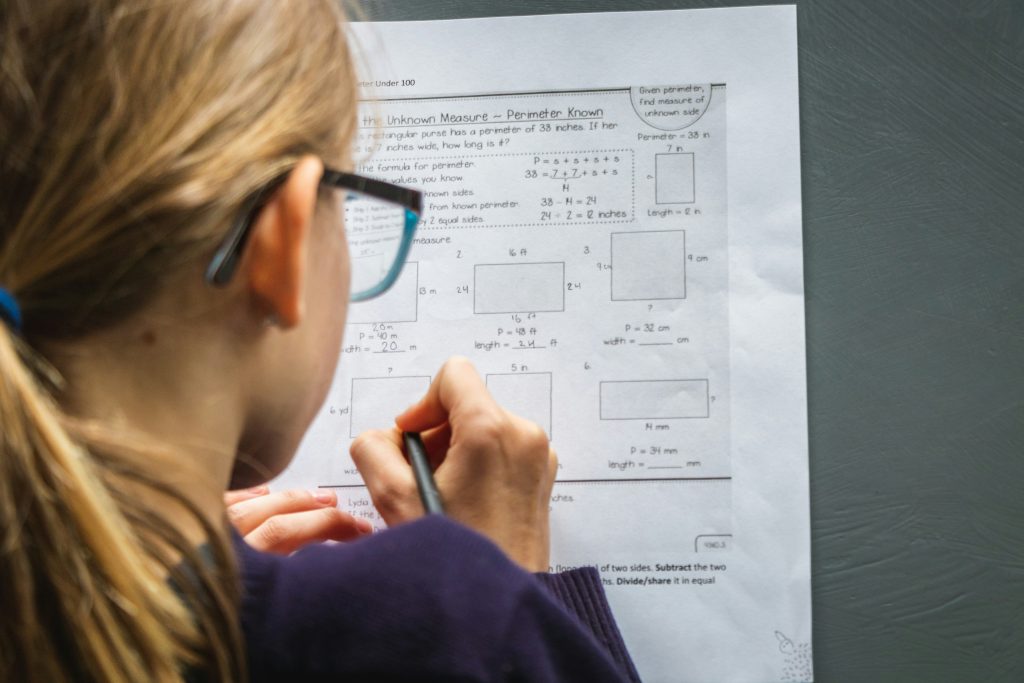Learning Difficulties in Math
Breaking Down the Barriers: Understanding Why Math Can Feel So Hard and How to Overcome It

Mathematics is a subject that many students find intimidating and difficult. The struggle with math is not only widespread but also persistent, affecting students from elementary school through college. The difficulty in learning mathematics can lead to a host of other issues, such as low academic performance, a lack of confidence, and even a lifelong aversion to math-related tasks. But why is mathematics so challenging for so many students? In this comprehensive article, we will explore the various factors contributing to the difficulty of mathematics, delve into the psychological and educational aspects of the problem, and offer effective solutions to help students overcome these challenges
The Complexity of Mathematics: A Multi-Faceted Problem
Math often feels like a subject that requires a natural knack for it. It feels like you either got it or you don’t. But there are plenty of various factors that can make math difficult for students. These factors include cognitive challenges, emotional responses like anxiety, gaps in foundational knowledge, the abstract nature of math, and the way it is taught. Let’s break down these components to better understand why students struggle with math.
1. Cognitive Challenges: The Brain & Math Difficulty
Mathematics involves a high level of cognitive processing, requiring students to engage in abstract reasoning, problem-solving, and logical thinking. For some students, these cognitive demands can be overwhelming.
- Abstract Thinking: Mathematics often requires thinking in abstract terms, dealing with symbols, formulas, and concepts that do not have a direct physical representation. For example, understanding the concept of a variable in algebra, which represents an unknown value, can be challenging for students who are more accustomed to concrete, tangible learning experiences.
- Working Memory: Math problems often involve multiple steps, and students need to hold information in their working memory while they perform calculations. For students with weaker working memory, keeping track of all the steps in a complex problem can be particularly difficult, leading to mistakes and frustration.
- Spatial Reasoning: Geometry and other areas of mathematics require strong spatial reasoning skills. Students who struggle with visualizing shapes, angles, and dimensions may find these topics particularly challenging.
Solution: Overcoming Cognitive Challenges in Math
- Use memory games and puzzles to improve working memory.
- Strengthen spatial reasoning through drawing and manipulatives.
- Break down complex problems into smaller, manageable steps for easier processing.
2. Lack of Foundational Understanding: The Building Blocks of Math
Mathematics is a cumulative subject, where each new concept builds on previously learned material. If students do not have a solid understanding of basic math concepts, they are likely to struggle with more advanced topics.
- Early Learning Gaps: If a student misses out on learning key concepts in early grades, such as addition, subtraction, multiplication, or division, these gaps can create significant challenges as they progress to more complex math. For example, a student who has not mastered multiplication will struggle with division and fractions, which in turn will affect their ability to understand algebra.
- Misconceptions: Sometimes students develop misconceptions about mathematical concepts, which can hinder their ability to progress. For instance, a student might incorrectly believe that multiplying two numbers always results in a larger number, which can cause confusion when they encounter fractions.
Solution: Addressing Foundational Gaps in Math
- Implement early intervention and continuous assessment to identify learning gaps.
- Regularly evaluate students’ understanding of basic math concepts.
- Provide additional support through tutoring, extra practice, or educational technology.
- Strengthen foundational skills to prepare students for advanced topics.
3. Math Anxiety: The Emotional Barrier
Math anxiety is a well-documented phenomenon where students experience intense feelings of fear, tension, and worry when faced with math tasks. This anxiety can significantly impact a student’s ability to perform well in mathematics.
- The Cycle of Anxiety: Math anxiety often begins with a negative experience, such as failing a math test or struggling with a difficult problem. This experience can create a fear of math, leading to avoidance behaviors (like procrastination) and further negative experiences. Over time, this cycle of anxiety and avoidance can severely hinder a student’s ability to learn and succeed in math.
- Physical and Cognitive Effects: Math anxiety can manifest in physical symptoms such as sweating, rapid heartbeat, and even panic attacks. It can also interfere with cognitive processes, making it harder for students to concentrate, recall information, and solve problems effectively.
Solution: Combating Math Anxiety
- Foster a positive and supportive learning environment.
- Encourage a growth mindset, reinforcing that mistakes are part of learning.
- Use relaxation techniques like deep breathing or mindfulness to reduce anxiety.
- Teach problem-solving strategies, such as breaking problems into smaller steps.

4. Teaching Methods and Learning Styles: The Impact of Instruction
Not all students learn in the same way, and traditional teaching methods may not align with the diverse learning styles of all students. This mismatch can make it difficult for some students to grasp mathematical concepts.
- Traditional vs. Innovative Teaching: Traditional math instruction often focuses on rote memorization and repetitive practice. While this approach works for some students, others may struggle to see the relevance of what they are learning or find it difficult to engage with the material. Innovative teaching methods that incorporate visual aids, hands-on activities, and real-world applications can make math more accessible to a wider range of learners.
- Learning Styles: Students have different learning preferences. Some may be visual learners who benefit from diagrams and visual representations, while others might be auditory learners who need to hear explanations out loud. Kinesthetic learners, who learn best through hands-on activities, might struggle with traditional lecture-based instruction.
Solution: Making Math Relevant and Engaging
- Connect math to real-world applications like budgeting, cooking, and sports statistics.
- Use project-based learning to help students apply math to real-life problems.
- Bridge the gap between abstract concepts and practical use to enhance understanding.
- Make learning engaging and meaningful by showing the value of math in everyday life.
5. The Abstract Nature of Mathematics: Bridging the Gap Between Concept and Application
Mathematics is often perceived as an abstract subject, dealing with concepts that may not have immediate or obvious real-world applications. This abstraction can make it difficult for students to understand and engage with the material.
- Abstract Concepts: Topics such as algebra, calculus, and even basic arithmetic involve abstract thinking. For example, the concept of a negative number or an imaginary number can be difficult for students to grasp because they do not correspond to something tangible in the real world.
- Relevance to Daily Life: When students do not see the connection between what they are learning and how it applies to their lives, they may lose interest and motivation. For instance, a student might question the relevance of learning about quadratic equations if they cannot see how it relates to anything they do outside of school.
Solution: Adapting Teaching Methods for Diverse Learners
- Use visual aids (charts, graphs, models) to support visual learners.
- Incorporate group discussions and oral explanations for auditory learners.
- Engage kinesthetic learners with hands-on activities like manipulatives and math games.
- Apply differentiated instruction to tailor teaching methods to individual student needs.
6. Negative Perceptions and Attitudes: Overcoming Cultural and Societal Barriers
Cultural attitudes and societal perceptions often portray mathematics as a difficult and exclusive subject, accessible only to those with a “natural talent” for it. These perceptions can discourage students from putting in the effort to succeed in math and can lead to a fixed mindset where they believe their abilities are static.
- Stereotypes and Gender Bias: There are pervasive stereotypes that suggest that math is a subject better suited for boys than girls. Such stereotypes can affect students’ self-esteem and influence their performance and interest in math. Girls, in particular, may feel less confident in their math abilities due to societal expectations and biases.
- Fixed vs. Growth Mindset: A fixed mindset is the belief that abilities are innate and unchangeable, while a growth mindset is the belief that abilities can be developed through effort and practice. Students with a fixed mindset may give up easily when faced with challenges in math, believing that they are simply “not good at math.”
Solution: Shaping a Positive Math Mindset
- Promote a growth mindset, emphasizing that math skills improve with effort.
- Challenge stereotypes and encourage all students to pursue math with confidence.
- Highlight role models who have succeeded in math to inspire students.
- Use inclusive teaching practices to create an equitable learning environment
Empowering Students to Overcome Math Challenges
Mathematics is a subject that presents unique challenges for many students, but these challenges are not insurmountable. By understanding the cognitive, emotional, and educational factors that contribute to math difficulties, educators, parents, and students themselves can take proactive steps to address these issues.
Ensuring that students have a solid grasp of basic math concepts is essential for their success in more advanced topics. Building strong foundations allows students to approach more complex material with confidence. Additionally, creating a supportive and positive learning environment is key to reducing math anxiety, which can be a significant emotional barrier to success.
Adapting teaching methods to cater to different learning styles makes math more accessible and engaging for all students. Using diverse instructional strategies helps address individual needs and learning preferences, making it easier for students to connect with the material. Moreover, making math relevant by connecting it to real-world applications helps students see the value in what they are learning, further enhancing their motivation and interest.
Finally, challenging negative perceptions and encouraging a growth mindset can empower students to believe in their ability to succeed in mathematics. By promoting perseverance and the idea that math skills can be developed through effort, students are more likely to approach math with a positive attitude.
With the right support, strategies, and mindset, every student has the potential to overcome their difficulties with mathematics and achieve success in this important subject. By working together, we can help students build the confidence and skills they need to thrive in math and beyond.
If You Need Help with Math, TutorShark Can Help!
Struggling with math can be frustrating and overwhelming, but you don’t have to face these challenges alone. At TutorShark, we specialize in providing personalized tutoring services designed to meet the unique needs of each student. Whether you’re having trouble with basic math concepts or advanced topics like algebra and calculus, our experienced tutors are here to help you build confidence and achieve your academic goals.
Our approach is tailored to fit your learning style, ensuring that you not only understand the material but also enjoy the learning process. We believe that with the right support and guidance, every student can excel in math. Let TutorShark be your partner in overcoming math challenges and unlocking your full potential.
Contact us today to learn more about how we can help you succeed in math and beyond!